Why a gas pipe is electrocuted: reasons and ways to deal with the problem
Imagine this situation - you touch pipes or gas-using appliances and receive a small electrical pinch. If you have already encountered such a problem, then you have probably asked yourself the question: how and why does a gas pipe produce an electric current, even if the electrics are in fully working order?
Let's look at this issue in detail and clarify all the nuances of this strange and, at first glance, alarming phenomenon.
The content of the article:
Causes of stress in pipes
Pipes just can't give an electric shock. There must be reasons for them to “pinch”.
Among the possible:
- theft of electricity by neighbors;
- homemade grounding not in accordance with PUE standards;
- malfunction of current consuming devices;
- poor grounding contact or lack thereof;
- broken wiring.
At first glance, the tingling is insignificant and does not create any particular inconvenience. However, everything is not as simple as it seems and therefore it is worth examining each reason in more detail.
Neighbors steal electricity
Everyone in the house has an electricity meter, and it has 4 contacts:
- the phase that comes from the substation;
- phase output from the meter;
- zero to the substation;
- zero from the meter to the electrical wiring.
When neighbors try to steal electricity, they throw the neutral wire from the electrical consumer onto the pipes, while ignoring the neutral wire from the meter.
Let's try to explain in more detail.
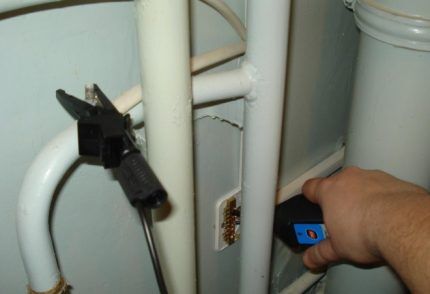
Electricity tariffs do not please consumers. Especially in the cold season, when people connect heaters and other devices that help raise the temperature in their house or apartment.
When current enters the house, it runs in phase and then returns through zero to the power plant. To ensure that the refund does not go anywhere and is not taken into account on the meter, consumers create their own zero and connect it to electrical appliances. And in order for the unaccounted current to escape, it is grounded to the pipes of various utilities, including heating.
Accordingly, an electric potential arises on the heating pipes.
Imagine that at this moment a person took hold of the powered pipe and, accordingly, the current flowed along the path of least resistance, that is, there is no potential equalization through it. It is unknown whether a person can be killed at this moment. It depends on many factors. Either way, it is dangerous and extremely unpleasant.
In the case of such a “good neighborly” connection, you must immediately contact the energy supply organization, invite them to your house or apartment to take measurements and find the culprit. This will not look like slander, because your life and health depend on it.
Homemade grounding not according to PUE standards
The instructions for each electrical device contain grounding requirements.And if you can make grounding in a private house by watching the instructions from the YouTube channel, then with multi-storey buildings everything is more complicated.
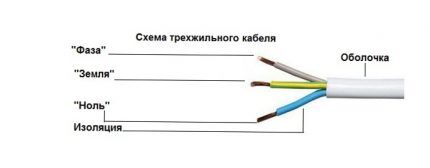
Many owners of houses with old electrical wiring ground their equipment, modern household appliances, to pipes. When a phase breaks down, it will fall on them and thus they will be energized.
The owner of a house or apartment, as well as his neighbors, when connected to a common riser in an apartment building, will find themselves in serious danger, especially if other devices are also grounded on the pipes.
Grounding to utility pipes is not a normal practice. If you experience this, get rid of it immediately and create high-quality “soil.”
Electrical appliances are faulty
Devices connected to gas-using equipment can also be electrically dependent. This includes lighting, piezo ignition, automation, and so on. If your device is not grounded, then if it malfunctions, it may begin to pierce the lines connected to it. In this case, to the pipeline.
Accordingly, a person is electrocuted when touching the pipe. Again, on the principle of passing through least resistance.
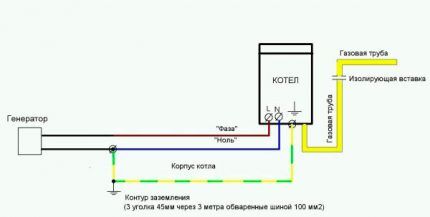
In apartments, current can flow through neighboring pipelines.
Typically, devices with such problems seem to hum and vibrate slightly in the hands or when touched. In general, faulty equipment is usually immediately visible and in order to avoid any problems with it, it is necessary to immediately carry out repairs, and of course, make high-quality grounding.
Shorting wires to pipes
So, it seems like your neighbors or you have done everything according to the rules. But when you touch the pipes, you still get an electric shock. How can this happen?
As a rule, this is possible if there is no RCD, when for some reason the counter machine does not knock out.
This may happen when:
- problems with grounding (wrongly done or there is a broken contact);
- when the phase shorts to ground.
As a rule, if a phase touches any conductor in the wall, the voltage will flow through all devices and, importantly, may go into the pipes communicating with the conductor, including heating ones. And in this case, they can be electrocuted.
Stray currents in the gas pipeline
Have you ever heard the phrase “stray current”? For those who do not know, this is a process in which the movement of charged particles occurs in a conductor.
To form a standard current, the potential difference and the connected conductor are given. But it happens that for some reason the conductor is the earth or metal placed in the ground. That is, in our case, gas pipes.
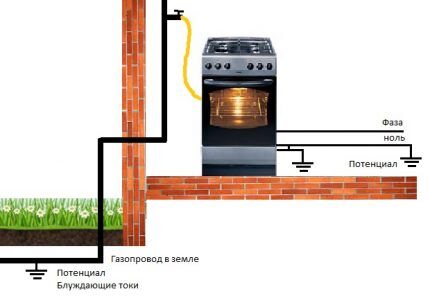
By the way, this is not the whole danger of stray currents.Because of them, electrochemical corrosion occurs, destroying pipes.
Why are conductive pipes dangerous?
Even a small voltage (42 volts or more) can kill a person, depending on many factors, including:
- Painful condition.
- Diseases of the heart and blood vessels.
- Alcohol intoxication.
- Factors that enhance current conductivity.
It is difficult to say definitively what an electric shock will lead to - from a minor pinch to death.

In addition, let's not forget that electric current and gas are still a negative combination, which, under unfavorable circumstances, can cause a fire or explosion.
Read the article - Electric shock from tap water.
How to protect pipes from current?
If the gas pipe is experiencing strong or minor electric shock, then the first thing to do in this situation is to immediately find the source of the problem and eliminate all faults.
For this:
- Turn off the power in your house or apartment.
- Inspect all your gas-using equipment connected to electrical networks for breakdowns, and if a defect is found, correct it.
- If the house was recently purchased or rented, inspect the pipes for any strange connections - this should have been done at the time of purchase.
- Make and check grounding from each device, if you cannot do this yourself, invite an electrician.
- Conduct a visual diagnostics of existing grounding.
- If standard grounding is not possible, portable grounding rods (also called portable busbars) are installed.
- As protection against stray currents for gas-using equipment, it should be installed immediately after the shut-off valve dielectric insert. And its presence, by the way, is mandatory, according to SP 402.1325800.2018.
And, of course, be sure to invite a specialist from the energy supply organization to look for a possible problem if you yourself do not have sufficient experience and knowledge in electrical engineering.
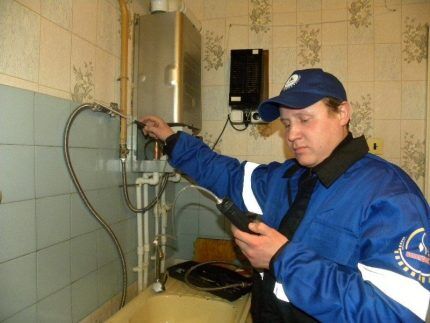
For residents of apartment buildings, contacting the supplier directly is not necessary.
You can call or appear in advance at the Criminal Code and report your problem.
Conclusions and useful video on the topic
Video. Is the radiator grounded? Do not repeat, it is dangerous:
Heating pipes in a house or apartment quite often present their owners with a “surprise” in the form of electric discharges. You shouldn’t joke with your life, and even more so, refuse a visit from a specialist who will troubleshoot and fix them.
Have you ever been electrocuted by gas pipes? How did you solve the problem? Share your experience in the comments and ask any questions you have about the topic of the article.




An engineer (if you are called that) must understand the subject of his interest, otherwise he is a specialist, an abstract and leveled concept that justifies amateurism (education is not necessary here).
Connecting a neutral conductor to third-party utility lines will not help steal electricity, this follows from the principle of operation of the meter, until you create a path for the current to bypass the current coil of the meter.
The potential on the battery pipe means the presence of a bypass current path, which results in a disruption in the power supply networks and emergency electrical installations.